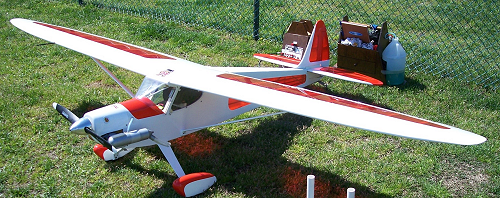![]() Lift Distribution Control Using Spatially Distributed
Actuators and Sensors
Lift Distribution Control Using Spatially Distributed
Actuators and Sensors
Executive Summary
The purpose of Lift Distribution Control (LDC) is to demonstrate the real-time, closed-loop control of an aircraft’s lift distribution in flight. LDC uses several enabling technologies, the key of which are spatially distributed trailing-edge flaps and conformal aerodynamic sensors. The number, size and location of the trailing-edge flaps are determined using a shape optimization problem based on the desired lift distribution or set of distributions. The result is a set of trailing edge flaps that can achieve the desired lift distributions with minimum error.
Conformal aerodynamic sensors have been developed for the LDC program that can provide direct measurements of the lift and drag on an aircraft wing. These sensors implement smart materials, such as piezo-resistive inks and quantum-tunneling composites, on spatially shaded sensor apertures that are designed to extract desired aerodynamic properties from the flow on an aircraft wing by on- board integration of the distributed pressures.

Rascal testbed aircraft
The LDC research program uses these spatially distributed flaps and conformal sensors, along with custom designed flight control and data acquisition hardware, to demonstrate the measurement and closed-loop control of the lift distribution on a testbed aircraft based on a commercially available model aircraft.
Primary Project Objectives
- Demonstrate the in-flight, closed-loop control of an aircraft’s main wing’s lift distribution using optimal, spatially distributed trailing-edge flaps and aerodynamic sensors
- Develop methods for the selection of the trailing-edge flap spatial distribution for minimal error in the resulting lift distribution shapes
- Develop and incorporate sensors that allow for the real-time measurement of the lift distribution with minimal hardware
Research Description
Lift Distribution Control (LDC) is focused on the development of algorithms and technologies that will enable real-time measurement and control of an aircraft’s main wing lift distribution. This tailoring of the lift distribution results in an ability to control or improve the performance of the aircraft on which it is implemented. The primary areas of research in LDC are conformal, spatially-distributed sensor development and trailing-edge flap spatial distribution optimization.
Motivation for this research comes from the need to extend the performance envelope of present aircraft and Unmanned Air Vehicles (UAVs) by extending their range, improving endurance, reducing stall speed, etc. One way to perform these extensions of the performance envelope is through the use of morphing technologies. This research implements a simple morphing mechanism whereby the trailing edge of a UAV’s main wing is given additional degrees of freedom for deflection, or twist, through the use of segmented trailing edge flaps. Furthermore, conformal aerodynamic sensors are used, in an un-intrusive way, on the surface of the UAV wing to measure the aerodynamic flow properties, such as lift, drag, and center of pressure, without the need for a large number of pressure taps and transducers. This research will focus on developing and testing these methods in a free-flight testing environment on a UAV aircraft.
Trailing-edge flap optimization involves the determination of the optimal spatial distribution of the trailing edge flaps on the testbed aircraft’s main wing to produce some desired lift distribution, e.g., an elliptical lift distribution. A new algorithm has been developed that determines the appropriate trailing edge actuator sizes, locations and deflections to produce an approximate lift distribution with minimal integrated mean-squared error. The first prototype wing has been designed and built that implements eight optimally sized trailing edge flaps with the goal of achieving an elliptical lift distribution with minimal error. This wing can be seen below.

Custom LCD wing installed on the Rascal testbed
At present, LDC is implementing pressure sensors on the LDC custom wing and collecting flight data of the lift distributions. Some data plots will be coming soon.
Videos
A bird demonstrates the biological version of lift distribution control. Note the use of passive and active feather deployments and wing angle changes.
|
QuickTime Format. or try a different browser. Quicktime Player required for viewing. You can download a free player HERE |
|
This video displays a simple demo of the spatially distributed conformal pressure sensors that provide the aerodynamic feedback for the Lift Distribution Control algorithms. The conformal pressure sensor is sampled by a microprocessor and provides direct feedback to a control flap in this simple demo.
|
QuickTime Format. or try a different browser. Quicktime Player required for viewing. You can download a free player HERE |
|
This video is a short demonstration of the spatially-distributed and independently controlled flaps on the custom LDC wing at the lab. Notice the temporary introduction of a static shape into the trailing-edge flap deflections and the superposition of the aileron command.
|
QuickTime Format. or try a different browser. Quicktime Player required for viewing. You can download a free player HERE |
|
This is a video of the maiden flight of the Rascal testbed with the custom LDC wing.
|
QuickTime Format. or try a different browser. Quicktime Player required for viewing. You can download a free player HERE |
|
![]()

